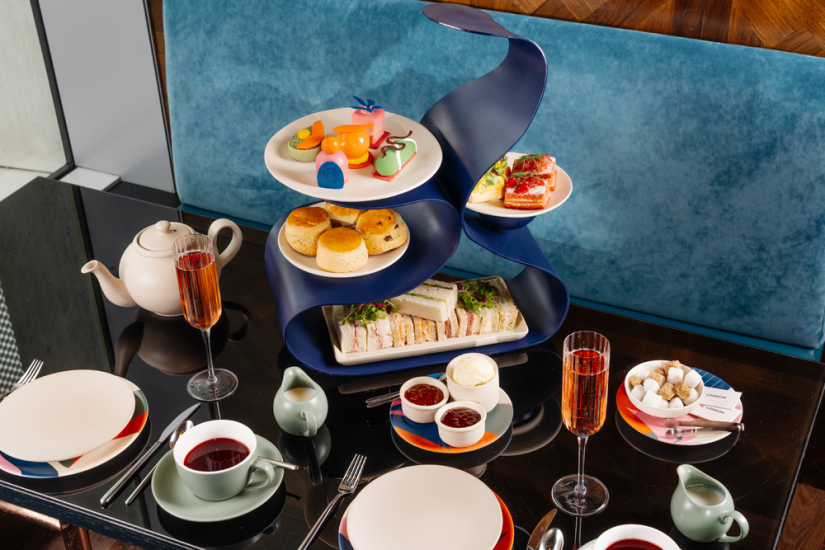Finding it tricky to resist that Mcdonalds burger, or that extra packet of crisps? New researchfrom the Montreal Neurological Institute and Hospital of McGill University, found that our hunger response is due to a hormone found in the stomach that makes some of us more vulnerable to tasty food smells, encouraging overeating and obesity. The hormone, known as ghrelin, was found to control the extent to which the brain associates reward with food odours. Ultimately, the research suggests a genetically based hypersensitivity to food-associated images and smells.
Dr. Sarah Brewer, working in association with the Type-2 Diabetes supplement, CuraLin (www.curalife.co), shares her thoughts on the study:
Ghrelin is a hormone produced by cells in the lining of your stomach when it’s empty. Ghrelin directly stimulates your appetite centre in the brain to trigger hunger and food cravings that encourage you to overeat.
New research helps to explain how ghrelin makes the sight and smell of food hard to resist. Ghrelin is known to interact with dopamine, a brain chemical involved in reward responses and making you feel good. It now seems that ghrelin controls the extent to which the brain associates reward with food odours and increases the pleasure associated with food images.
People who are struggling to lose weight often have an increased sensitivity to food-associated images and smells that cause them to eat. Infusing ghrelin into the circulation of volunteers can increase their amount of food they eat by as much as 28%.
Once you start to eat, your ghrelin levels start to fall. This fall in ghrelin levels is linked with increasing levels of insulin, and it was recently recognised that ghrelin may help to control glucose metabolism and play a role in the development of type 2 diabetes.
Researchers hope to find a way of blocking unwanted ghrelin responses to reduce food cravings to make it easier to stick to a weight loss diet, and to improve glucose control.
DrSarah Brewer, working in association with the Type-2 Diabetes supplement, CuraLin (www.curalife.co) reveals 10 top tips in combating cravings (even if they do smell scrumptious!):
Practice Yoga – People who regularly practice yoga are more attune to their appetite and are better able to judge when they are full.
Eat Mindfully – Don’t eat while doing something else such as reading or watching TV. Instead, focus on all aspects of the experience and chew food thoroughly – some suggest twenty to thirty chews per mouthful. Slow eating gives your brain time to respond to falling levels of ghrelin and other triggers that indicate you are full. As soon as you feel full, stop eating.
Don’t Remove the Evidence – When giving in to a craving, leave sweet wrappers, crisps bags, empty biscuit tin or donut crumbs on the table in front of you. Psychologists have found that when you are confronted with the proof of your indulgence you will eat less overall.
Keep a Food Diary – Explore why you eat using a food diary. Ask yourself “How Hungry am I’” and record your emotions before, during and after eating. This helps to focus your awareness on your eating habits.
Exercise – Cravings can often be overcome by brisk exercise, which releases the brain’s own opium like chemicals (endorphins, enkephalins) to help you feel good and suppress cravings. A walk will also help to burn off some additional calories as part of a weight loss regime.
Try Aromatherapy – Inhaling the scent of banana, green apple or peppermint essential oils can reduce food cravings so you eat less overall. Inhaling the aroma of vanilla can help you overcome cravings for chocolate.
Try Acupuncture – Auricular acupressure, which stimulates points on the ear, can help to curb cravings. Appetite suppression points on the tragus – the small pointed part of the ear in front of the ear canal – are believed to slow stomach emptying, increase feelings of fullness and lessen hunger.
Try Ayurvedic Herbs – If you have type 2 diabetes, that’s being managed on diet and lifestyle, a blend of Ayurvedic herbs is traditionally used to reduce food cravings and improve glucose control, such as CuraLin(£59.00, curalife.co), however if you are already taking a prescribed medicine to treat type 2 diabetes, it is important to check with your doctor first.
Find Healthy Alternatives – When you crave something sweet, eat sweet fruit (berries, nectarines, cherries, bananas etc) or a handful of dried fruits instead of confectionary. If craving chocolate select antioxidant-rich dark chocolate with at least 70% cocoa solids, not milk or white chocolate.
Clean your Teeth – If all else fails, clean your teeth with a strong peppermint flavoured toothpaste – this helps stimulate your taste buds and is highly effective for reducing cravings.




